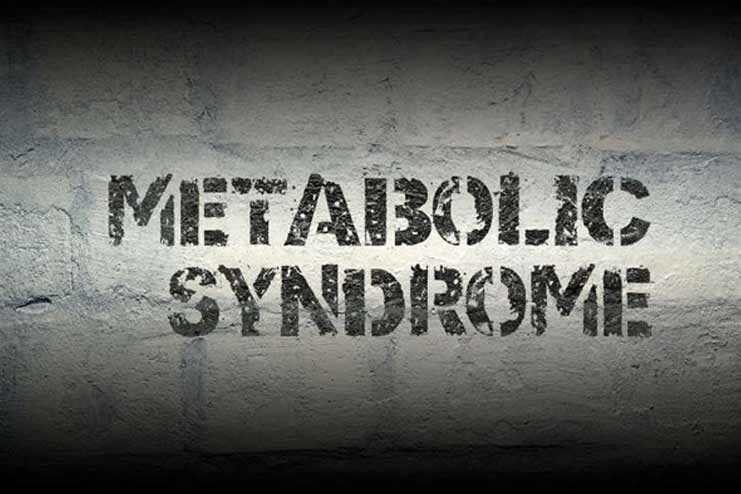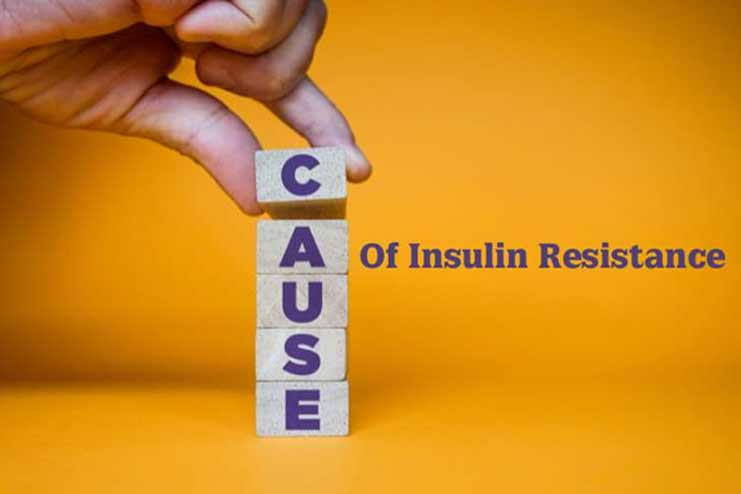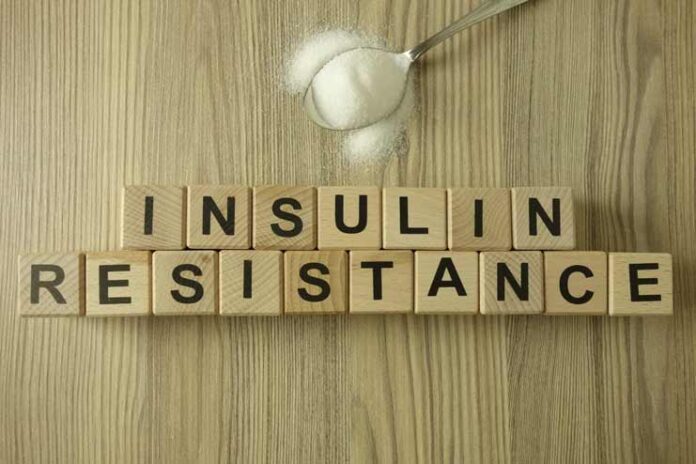Affiliate Disclaimer
Some links in this article are affiliate links. We may earn a small commission if you make a purchase through these links, at no extra cost to you. We only recommend products we find useful to our readersThe fact that metabolic syndrome frequently stays undiagnosed until it’s too late is what makes it so hazardous. The symptoms of Metabolic Syndrome include abnormally high cholesterol, extra body fat around the waist, and high blood pressure. Combining these disorders increases your risk of significant health problems like diabetes, heart disease, and stroke.
What is Metabolic Syndrome? Breaking Down the Syndrome

The term “metabolic syndrome” refers to a group of connected medical conditions that increase your chance of developing significant illnesses, including diabetes and heart disease. The cluster of metabolic variables involved, according to National Heart, Lung, and Blood Institute (NHLBI), includes:
- Abdominal Obesity: Abdominal obesity is defined as waist circumference more than 35 inches for women and more than 40 inches for males. Obesity with an enlarged waist circumference is the type most closely associated with metabolic syndrome.
- High Blood Pressure: Less than 120 mm Hg for systolic pressure (the above number) and less than 80 mm Hg for diastolic pressure (the bottom number) is considered normal blood pressure. Obesity and high blood pressure are closely related. Individuals with insulin resistance frequently have it.
- Elevated blood sugar: It can deteriorate your blood vessels and increase chances of blood clots, which can cause heart and blood vessel disorders.
- Reduced HDL cholesterol, also called “good” cholesterol: Your blood cholesterol levels determine your heart’s health. “Good” HDL cholesterol can help eliminate “bad” LDL cholesterol from your blood vessels. “Bad” LDL cholesterol can cause plaque to accumulate in your blood arteries.
- High blood triglycerides: Your blood contains triglycerides, a form of fat. Triglyceride levels over average might increase low-density lipoprotein (LDL), sometimes known as bad cholesterol. As a result, the risk of heart disease increases.
These elements frequently play simultaneously, forming the ideal storm for health issues. By addressing these risk factors, you may be able to prevent the syndrome from getting worse and lower the chance of acquiring more serious problems.
Also, read: How to Reverse and Prevent Insulin Resistance with Simple Lifestyle Changes
Insulin Resistance: The Core of Metabolic Syndrome
The main problem with Metabolic Syndrome is insulin resistance, which is a significant factor contributing to this complicated illness. However, what is insulin resistance exactly? In short, it happens when your body’s cells lose their sensitivity to the hormone insulin, which controls blood sugar. To compensate, the pancreas creates more insulin, which raises blood levels of both insulin and glucose.
Among the contributing causes are sedentary lifestyles, obesity, and increased energy intake. Chelsea Haselman, a certified diabetes educator and registered dietician at Bluffton Women’s Care, says a metabolic syndrome diagnosis is linked to a two-fold increased risk of cardiovascular disease development during the following five to ten years and a five-fold increased risk of Type 2 diabetes mellitus.
Understanding insulin resistance is essential since it is a basic component of a metabolic syndrome rather than merely a separate problem. Treating insulin resistance can dramatically enhance your overall metabolic health and lower your chance of developing related diseases.
Causes of Insulin Resistance: What Leads to the Breakdown?

Several reasons, both hereditary and lifestyle-related, can cause insulin resistance. These variables interfere with the body’s ability to manage blood sugar levels efficiently. One of the most critical factors is genetic predisposition; if you have a history of diabetes or metabolic syndrome in your family, you may be at a higher risk for developing these conditions. Nevertheless, adjustments to one’s way of life frequently hasten this process. Some lifestyle variables that contribute to insulin resistance include:
- They are overweight, particularly having excess fat in the abdominal region.
- A diet packed with carbohydrates.
- Gestational diabetes is present.
- Cushing’s syndrome, acromegaly, and hypothyroidism are examples of hormonal diseases.
- Stress which lasts for an extended period can cause high cortisol levels, decreasing insulin sensitivity.
Understanding these factors is necessary to avoid and manage insulin resistance properly.
Also, read: How Insulin Resistance Impacts Your Heart Health
Diagnosis of Insulin Resistance and Metabolic Syndrome
Identifying the different components of Metabolic Syndrome and insulin resistance diagnosis requires a systematic approach. Here’s a detailed explanation of the common steps doctors take to diagnose these conditions:
- Your doctor will first perform thorough physical examination and medical history to find symptoms and risk factors.
- Important tests include fasting insulin levels to measure insulin resistance and fasting blood glucose to look for high blood sugar levels. Hemoglobin A1c is an additional tool for assessing average blood sugar levels over time.
- Triglycerides and cholesterol levels, including LDL (bad) and HDL (good) cholesterol, are measured as part of this test to look for anomalies.
- High blood pressure, measured during the visit, is an essential component of Metabolic Syndrome.
Being aware of the diagnostic procedure can help you take an active approach to maintaining your health.
Tracking Your Progress: How to Measure Improvements

Achieving long-lasting outcomes requires tracking your progress in reducing insulin resistance and enhancing metabolic health. Monitoring important metrics enables you to assess the effectiveness of your lifestyle modifications and identify areas in which they may need to be modified.
- Tracking blood sugar levels: Elevated blood sugar levels may indicate insulin resistance. You can regularly check blood sugar levels with a home blood glucose meter.
- Waist circumference measurement: Waist circumference suggests the build-up of fat in the abdomen, which could be linked to insulin resistance. Insulin resistance may be more likely in individuals with waist circumferences larger than 88 cm (35 inches) for women and more than 102 cm (40 inches) in men.
- Carrying out the HOMA-IR computation: The at-home HOMA-IR (Homeostasis Model Assessment-Insulin Resistance) computation measures insulin resistance. This computation uses fasting insulin and blood glucose levels. You can access the HOMA-IR calculator online.
Conclusion
The subtle risk of insulin resistance is that it won’t immediately cause death. However, it is a contributing factor to a great deal of other potentially fatal illnesses. The good news is that treating this core reason could lower incidence and improve outcomes in many diseases. You can take charge of your metabolic well-being and reverse the effects of metabolic syndrome and insulin resistance. You can achieve notable gains by taking control of your lifestyle through regular exercise, healthy eating, and monitoring.
Other Recommended Articles
References
- https://www.ncbi.nlm.nih.gov/pmc/articles/PMC4129661/
- https://www.mayoclinic.org/diseases-conditions/metabolic-syndrome/symptoms-causes/syc-20351916
- https://answers.childrenshospital.org/metabolic-syndrome-insulin-resistance/
- https://joe.bioscientifica.com/view/journals/joe/220/2/T1.xml
- https://my.clevelandclinic.org/health/diseases/10783-metabolic-syndrome
- https://www.nhlbi.nih.gov/health/metabolic-syndrome/treatment
- https://www.hopkinsmedicine.org/health/conditions-and-diseases/metabolic-syndrome
- https://www.nhlbi.nih.gov/health/metabolic-syndrome
- https://journals.sagepub.com/doi/10.1177/2632463620935030
- https://www.uptodate.com/contents/metabolic-syndrome-insulin-resistance-syndrome-or-syndrome-x
- https://www.bvhealthsystem.org/expert-health-articles/what-is-insulin-resistance-what-is-metabolic-syndrome
- https://www.webmd.com/diabetes/insulin-resistance-syndrome
- https://www.mayoclinic.org/diseases-conditions/obesity/multimedia/vid-20536756
- https://www.broadwayclinic.com/article/what-causes-insulin-resistance-symptoms-you-need-to-know
- https://www.ncbi.nlm.nih.gov/pmc/articles/PMC1204764/
- https://www.ahajournals.org/doi/10.1161/CIRCULATIONAHA.105.169404
- https://www.mayoclinic.org/diseases-conditions/metabolic-syndrome/diagnosis-treatment/drc-20351921
- https://www.onedose.io/en/how-to-measure-insulin-resistance-at-home/
In this Article



















